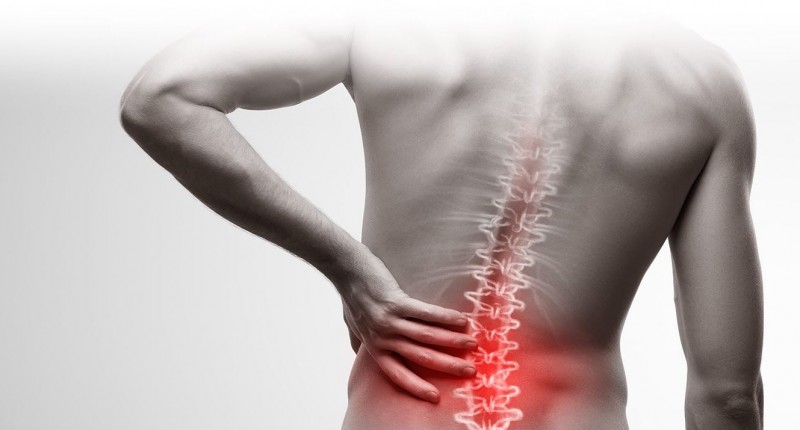
Back pain can be a significant source of discomfort for anyone, and it's crucial to address it rather than ignoring persistent discomfort. Prolonged sitting in the same posture can often lead to back pain, but if it persists over an extended period, it may be an early sign of a serious condition affecting bones and nerves. It is essential not to overlook back pain, as it could be indicative of underlying health issues.
Causes of Back Pain:
1. Poor Posture:
Poor posture is a leading cause of back pain, particularly in individuals who spend extended periods sitting at desks or using computers. When posture is compromised, it places undue stress on the spine, leading to muscle imbalances and discomfort. Proper ergonomic practices, such as maintaining a neutral spine position while sitting, using ergonomic furniture, and taking regular breaks to stretch, can mitigate the impact of poor posture on the back.
2. Improper Lifting Techniques:
Incorrect lifting techniques contribute significantly to back pain, especially in occupational settings that involve heavy lifting. Lifting objects without proper form can strain the back muscles and cause injury. To prevent this, individuals should be educated on correct lifting techniques, which include bending at the knees, keeping the back straight, and using the legs to lift heavy objects.
3. Muscle Strain:
Muscle strain is a common cause of acute back pain and can result from overexertion or sudden movements. It often occurs when the muscles are subjected to more force than they can handle, leading to microscopic tears. Regular exercise, including activities that strengthen the core and back muscles, can help prevent muscle strain and promote overall back health.
4. Herniated Disc:
A herniated disc occurs when the soft inner material of a spinal disc leaks out through a crack in the tough exterior. This condition can cause pressure on nearby nerves, leading to back pain. Factors such as age, genetics, and lifestyle choices contribute to the development of herniated discs. Treatment options vary, ranging from conservative approaches like physical therapy to more invasive interventions such as surgery, depending on the severity of the condition.
5. Untreated Medical Conditions:
Certain medical conditions, such as arthritis, osteoporosis, and spondyloarthritis, can manifest as persistent back pain. Arthritis causes inflammation in the joints, osteoporosis weakens the bones, and spondyloarthritis affects the spine and adjacent joints. Managing these conditions with medication, lifestyle modifications, and physical therapy is crucial to alleviate back pain associated with these underlying health issues.
6. Nerve and Bone-related Issues:
Problems with nerves and bones in the spine can lead to chronic back pain. Conditions like spinal stenosis, where the spinal canal narrows, and sciatica, involving irritation of the sciatic nerve, can cause radiating pain in the back. Addressing these issues may require a multidisciplinary approach, involving specialists such as orthopedic surgeons, neurologists, and physical therapists.
Preventing Back Pain:
1. Maintain an Active Lifestyle:
Regular physical activity is integral to preventing back pain. Exercise helps strengthen the muscles that support the spine, improves flexibility, and promotes overall well-being. Engaging in activities such as walking, swimming, or yoga can be effective in maintaining spinal health. Additionally, incorporating exercises that specifically target the core and back muscles enhances stability and reduces the risk of injury.
2. Correct Posture:
Conscious efforts to maintain proper posture play a crucial role in preventing back pain. Individuals should be mindful of their sitting and standing positions, ensuring that the spine is aligned correctly. Ergonomic furniture and accessories, such as lumbar supports, can provide additional support. Employers can contribute by promoting workplace ergonomics and encouraging employees to take regular breaks to stretch and change positions.
3. Exercise Regularly:
A structured exercise routine that includes both cardiovascular and strength-training components is essential for preventing back pain. Cardiovascular exercises improve blood circulation, while strength-training exercises, particularly those targeting the core and back muscles, provide stability and support to the spine. Consulting with a fitness professional or physical therapist can help design a personalized exercise program based on individual needs and fitness levels.
4. Lift Objects Properly:
Educating individuals on proper lifting techniques is a fundamental aspect of preventing back pain related to lifting activities. Techniques such as squatting, using the legs to lift, and keeping the back straight can significantly reduce the risk of muscle strain and injuries. Employers should provide training programs for employees involved in manual handling tasks to ensure a safe work environment.
5. Seek Immediate Treatment:
Timely medical intervention is crucial when back pain persists or is associated with other concerning symptoms. Individuals should not ignore persistent pain, as it could be indicative of underlying health conditions. Consulting with a healthcare professional, such as a primary care physician or orthopedic specialist, can help diagnose the root cause of the pain and determine an appropriate treatment plan.
Back pain is a multifaceted issue with various contributing factors. Understanding the causes and implementing preventive measures is key to maintaining a healthy spine and minimizing the impact of back pain on daily life. By adopting healthy lifestyle practices, maintaining proper posture, engaging in regular exercise, and seeking timely medical attention, individuals can proactively address back pain and promote overall spinal health.
Which tasks should be done after waking up in the morning and which should not be done?
How to Celebrate Bittersweet Chocolate Day: Bittersweet Symphony, Delicious Recipe